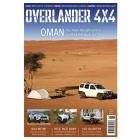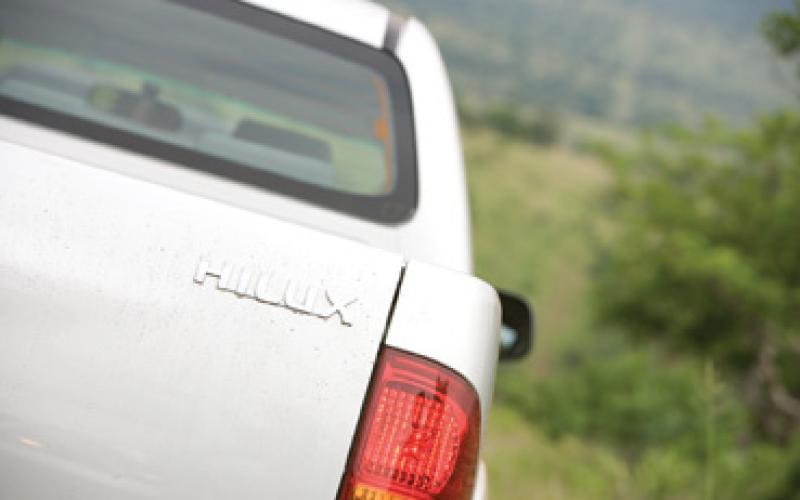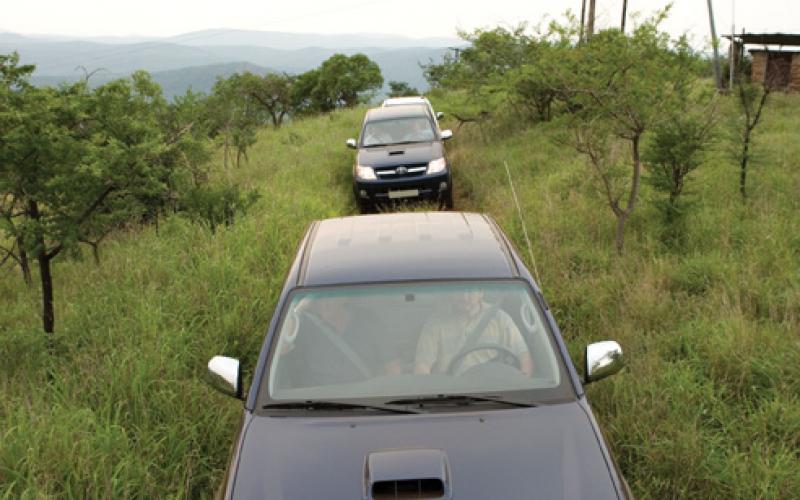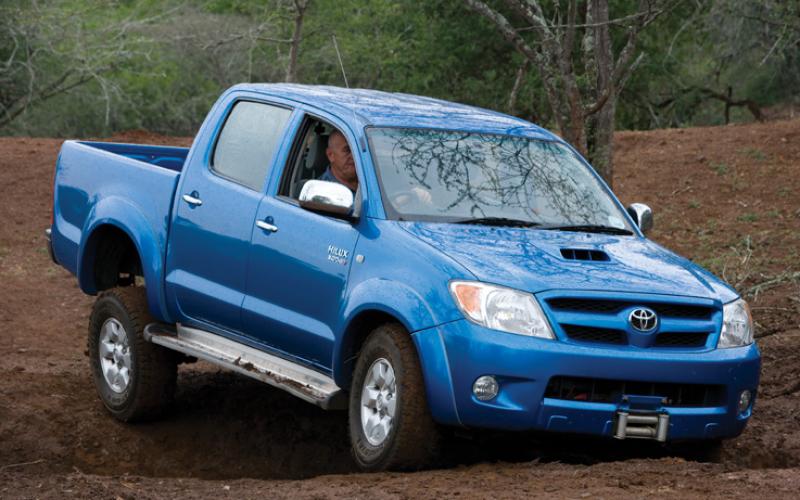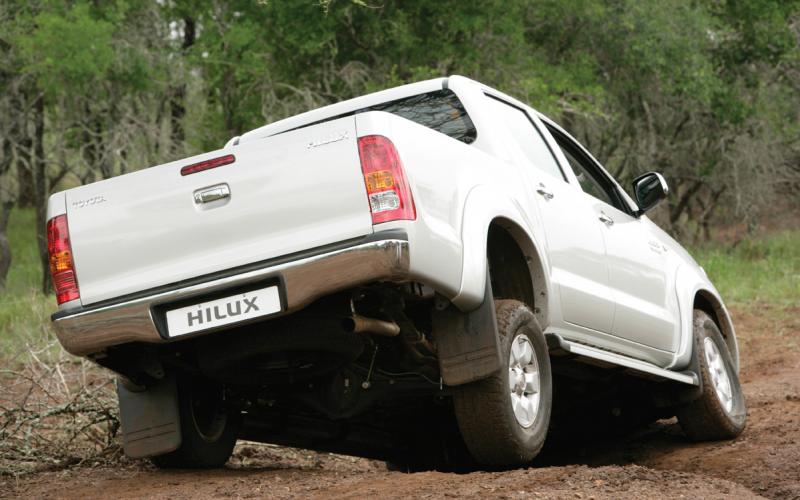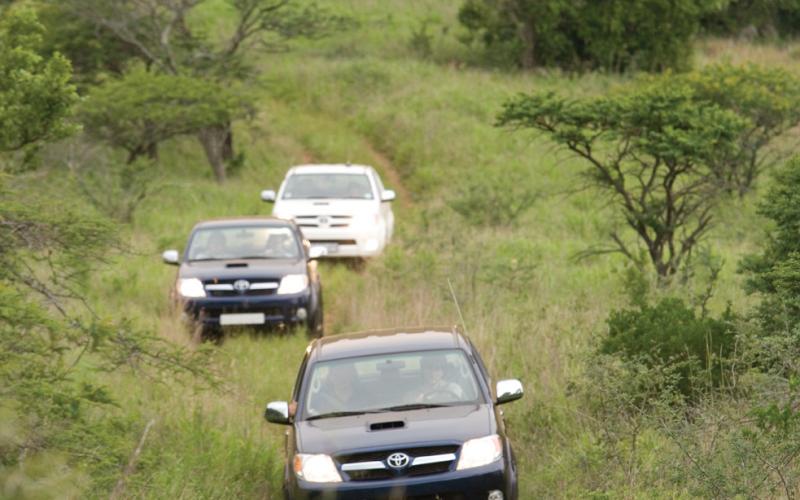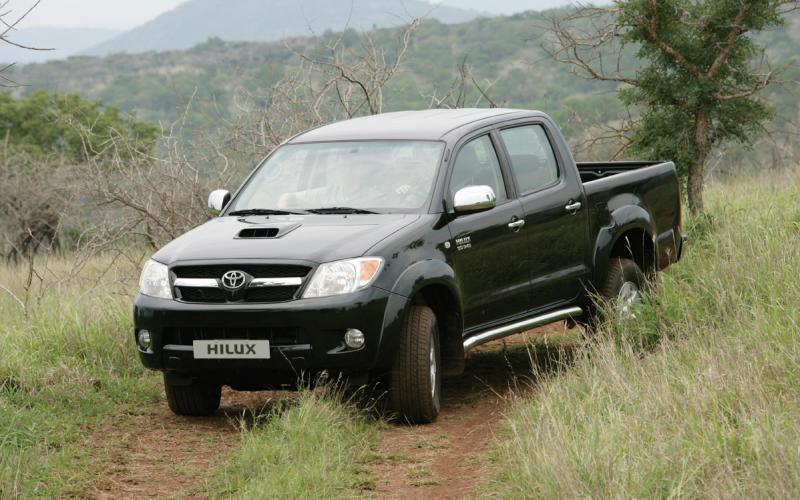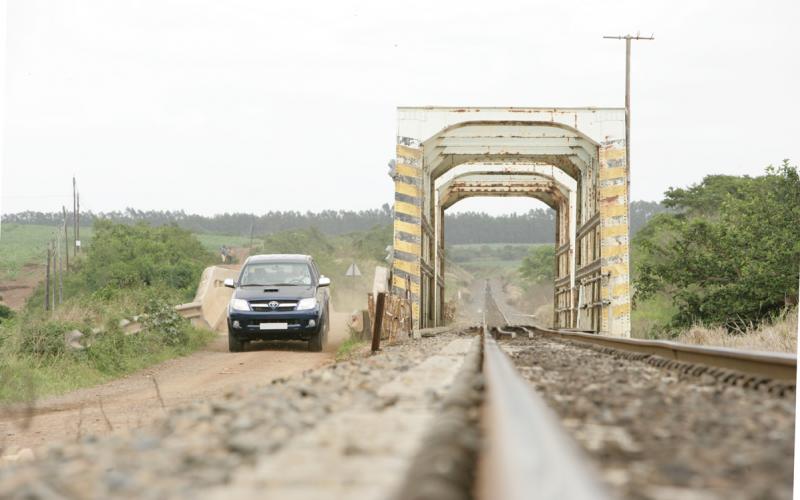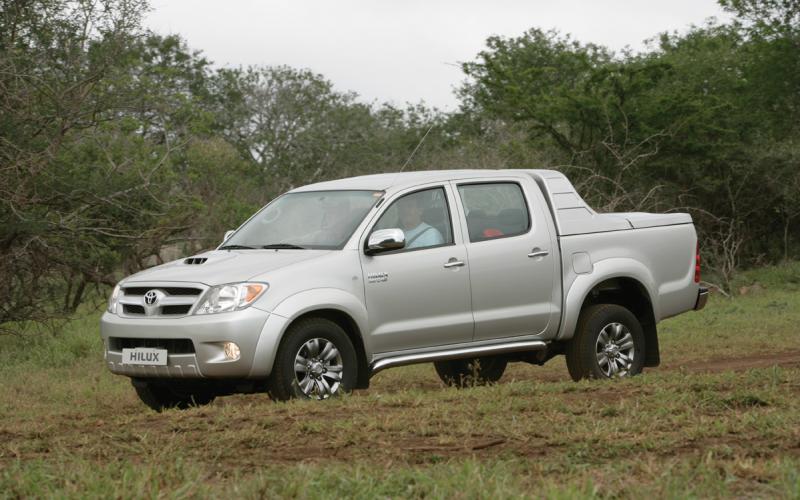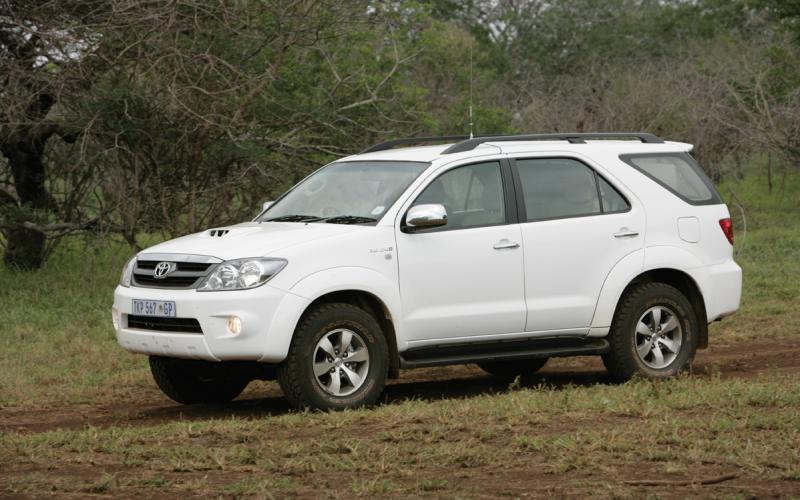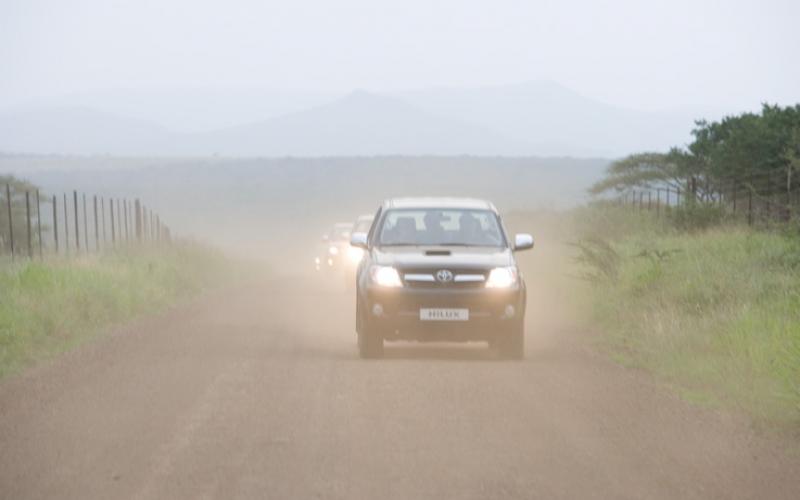All Creatures Great And Small
South Africa is home to many exotic species, most of which seem capable of doing you harm. Not a bad place to be behind the wheel of something Invincible, then…
I’ve always had a healthy disregard for camping. Maybe it’s the formative memories of childhood days and nights spent shivering under damp canvas in the Peak District, the distant experience of waking up during torrential rain in an Austrian valley to find that my air mat and I were floating in the middle of a field, or the crushing humiliation of arriving in an already-crowded camp site at Le Mans in a very, very expensive car and discovering that none of us actually knew how to put our tent up. Either way, camping never ceases to worry me.
But then, when you unzip your tent and emerge into a balmy evening to see, maybe fifty yards away, an elephant strolling past, it’s very hard not to conclude that actually, this is alright. Not that this is the most common of occurrences in the Peak District, or Austria, or even Le Mans, but when your tent is pitched in a clearing in Zululand Rhino Reserve, in the north-eastern corner of South Africa, an elephant is just one of the many wild animals you’re likely to encounter.
It’s also one of the many wild animals in the area with an almost infinite capacity to bump you off. Get on the wrong side of an elephant, and you’re going to get your head kicked in. Much the same goes for water buffaloes, though if they decide they don’t like you they’ll actually stalk you, outflank you and sneak up on you from behind. Unlike rhinos, which very much like elephants favour the ‘steamer’ approach when wound up.
Not that you even need to wind up a leopard or crocodile to suffer some real long-term inconvenience. Much can be said about all the other big cats indigenous to Southern Africa – with the possible exception of cheetahs, which when encouraged are almost uniquely people-friendly. Ironic, since no other big cat with the exception of the tiger has suffered so badly at the hands of the human race.
Not that you have to look far to find friendly animals in the African bush. In fact, I didn’t have to go looking at all. The morning after my elephant experience, I woke up to find that a tick of some sort had decided to start establishing a very determined friendship with my arm. Judging by the size of it, it was already well through the main course… in fact, when I gave it a tug to see if it was still attached, it responded with the sort of satisfied, post-prandial stretch you expect from one of your corpulent uncles after Christmas dinner.
Now, it would have seemed unwelcoming to give such an eager tent guest the boot, especially as it did indeed turn out still to be attached. And besides, I’d read that you’re not mean to just yank ticks off yourself, because that way you end with their heads still embedded in you and after a few days they start to rot.
So, children, we have animals that want to crash into you, animals that want to eat you and animals that want to pultify under your skin should you dare to mess with them. Getting the impression yet that South Africa is home to quite a lot of rather dangerous creatures?
Compared to this lot, things like giraffes, impalas, elands and warthogs are less concerned about killing you than about trying to avoid you killing them. Not an unwise position to adopt, given that these creatures are nature’s equivalent to Burger King. That’s why, whereas the reserve’s elephants and rhinos simply didn’t care about a plague of Toyota Hi-Luxes buzzing around their territory, less impregnable species like this took our arrival as a sign that it was time to run away.
This could be considered wise. The Hi-Lux is, after all, Invincible. Or, in the local language, SR-X. That’s what the top-spec model is called in South Africa – which, it might surprise you to learn, is where the Hi-Luxes we get in Britain are built.
Our visit to Zululand coincided with the arrival of the 3.0 D-4D engine in the Hi-Lux range, immediately taking it from being Britain’s most ponderous pick-up to offering a level of performance worthy of its sleek looks. Extra-sleek in the case of the Invincible, as this is the model with the alloys-and-leather treatment.
The 3.0 D-4D is of course the engine from the 120-Series Land Cruiser, a vehicle whose legendary off-road abilities were reviewed on last month’s issue. When it first arrived in the Hi-Lux, it was mated to a choice of previous-generation five-speed manual and four-speed auto boxes, but since then both have been brought up to date, meaning the truck gains an extra ratio whichever box you specify.
The 3.0-litre engine, which develops 169bhp and 253lbf.ft, the latter at an incredibly impressive 1400rpm, sits at the top of the Hi-Lux range. It’s only available on the Invincible and double-cab version of the one-down HL3, with a 118bhp 2.5 D-4D getting the nod on less lofty examples.
For us, this had two very good upshots. One was that the humid South African heat was kept from our cabin by the Invincible’s standard-fit air-con. The other was that we had an excellent touch-screen sat-nav charting our progress on the lengthy yomp from Zimbali, near where the vehicles are built in Durban, to the wildlife paradise of Hluhluwe-Imfolozi Park.
Hluhluwe (the letters ‘h’ are pronounced like an ‘sh’) is home to the world’s largest population of white rhino, as well as hundreds of the endangered black rhino. It’s not the only one that’s endangered: so will you be if you get on its wick, because it’s noted for being even more stroppy and anti-social than the white variety.
Not that it was easy to do anything other than just stop and say ‘ahhhh’ when we saw a crash of rhinos chilling a little way from the side of the road through the park. Mum and Dad were lying there basking in the fierce sun, while their young calves jumped about in the bushes. Baby rhinos can be best described as looking like the dog out of Tintin, but drawn with a bad hangover.
More surprisingly, the zeal of zebras we came across right by the side of the road didn’t bat an eyelid when we brought our Hi-Lux to a halt so close it was almost possible to reach out and touch them. Tourist vehicles are a familiar sight here, so the animals have clearly learned not to fear people, but it was still surprising to be accepted so matter-of-factly as part of everyday life.
It was noticeable, too, that there was a big difference between the animals in Hluhluwe and those in the much wilder Zululand reserve. In the former, we stopped and watched a corps of giraffes (is my encyclopaedic knowledge of congregational nouns getting on your nerves yet?) munching away happily at the treetops, a safe distance from our Hi-Luxes but still close enough to get spooked if they hadn’t been comfortable with us being around. The following morning, having got up early to search out animals in the area around our campsite in the latter, we caught just a glimpse of another three, maybe a quarter of a mile away, as they saw us coming and turned to run for their lives.
The other reason for getting up early was that we wanted to spend a good, long day getting to grips with the Hi-Lux on the sort of terrain for which the vehicle is built. You don’t buy a vehicle like this to perform the most extreme off-road stunts, but to shrug off endless hours, days and years of punishment on rough, bumpy tracks that constantly pound the chassis and suspension, working every moving part so hard it has to be right up to the job if it’s not to surrender meekly almost straightaway.
Of course, the Hi-Lux is famed for being almost uniquely capable of carrying on forever in conditions like this. Toyota has a titanic reputation in Africa, built on the strength of this vehicle and the Land Cruiser dynasty, and that speaks volumes for its engineering and build quality. The Hi-Lux Invincible might be dressed up as a lifestyle accessory, but it’s still based on absolutely the right stuff for wild country like this – and that fact alone is worth all the alloy wheels in the world.
Its big, tubular chrome side steps are less likely to make it through a life of off-road work, though, and on occasion we had to be careful to position the vehicle so as to avoid any danger of clouting them on rocks. Not that there’s any shortage of ground clearance, even with an independent front end to be taken into consideration. Whichever box you choose, meanwhile, its gearing will never deprive you of access to all that lovely low-down torque.
One disappointment, at least for us off-road fetishists, is that the arrival of the 3.0 D-4D signalled the end for the rear diff-lock that used to be standard across the Hi-Lux range. This is still fitted on 2.5-litre models, but Toyota seems to have concluded that the more powerful vehicle needs a limited-slip diff to keep it under control on the road.
Our day’s driving in Zululand included a carefully planned rough-terrain demo, which was designed to demonstrate that the LSD is as effective as a full locker but in fact convinced us of exactly the opposite. There’s no denying that this solution does have its advantages, however; despite being less effective in the most extreme situations, it does at least operate all the time, so for general above-average off-road duties which stress the vehicle’s drivetrain without actually lifting any wheels off the ground, it probably does more to help you out.
Since we drove the 3.0 D-4D in South Africa, in addition to those revised gearbox options Toyota has also introduced a 201bhp version of the same engine. This came and went as a limited edition, but the current Hi-Lux has also gained many items of kit that were missing back then, such as ESP, side/curtain airbags and the option of cruise control on manual models.
The vehicle we first drove in the exotic surroundings of the Hluhluwe and-Imfolozi and Zululand reserves has certainly continued to develop. Add in that 201bhp chip as a full-time option in the range, and it would be getting close to super-truck territory. As it is, what was once the tamest truck in town is now quite clearly something of an animal.
The Hi-Lux has spent most of its life as king of the pick-up jungle, and though it lost its crown for a spell a few years ago there’s little doubt that Toyota has taken all the right steps to put it back on the throne. There are a lot of seriously worthy pretenders to the crown – but with the strength of a rhino or elephant, the pacy agility of an impala and the stealthy power of a leopard, Toyota’s much-improved pick-up will never again be seen as just a beast of burden.
Words Alan Kidd
Pictures Steve Taylor



